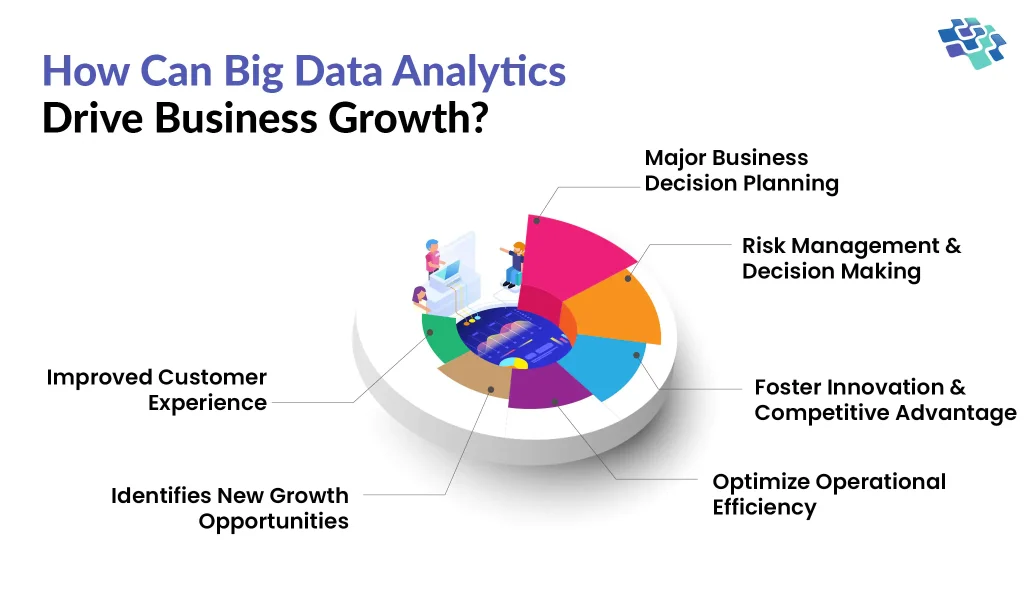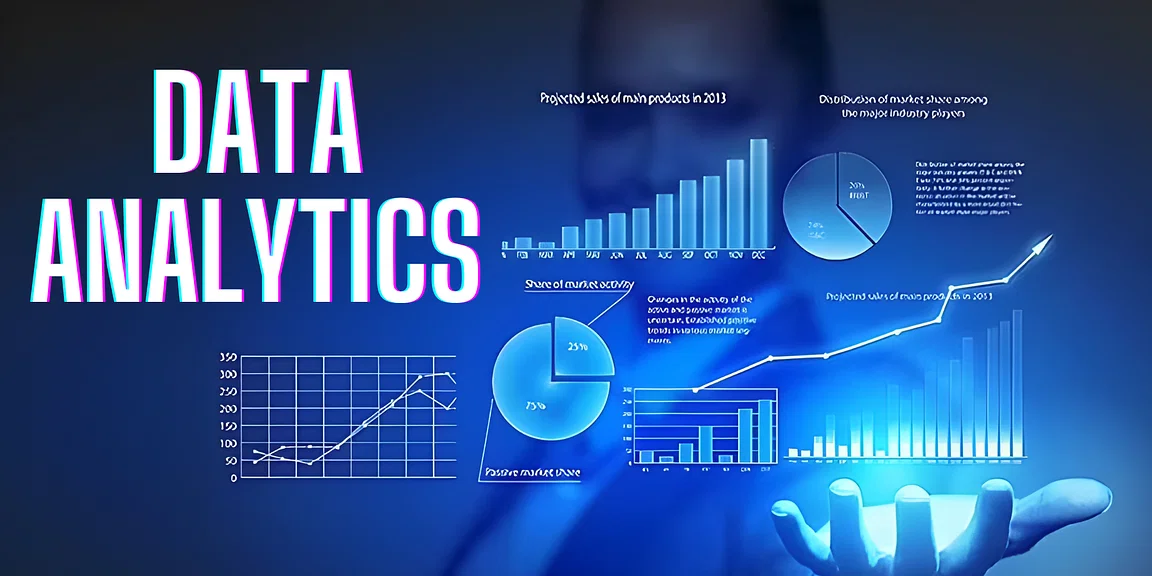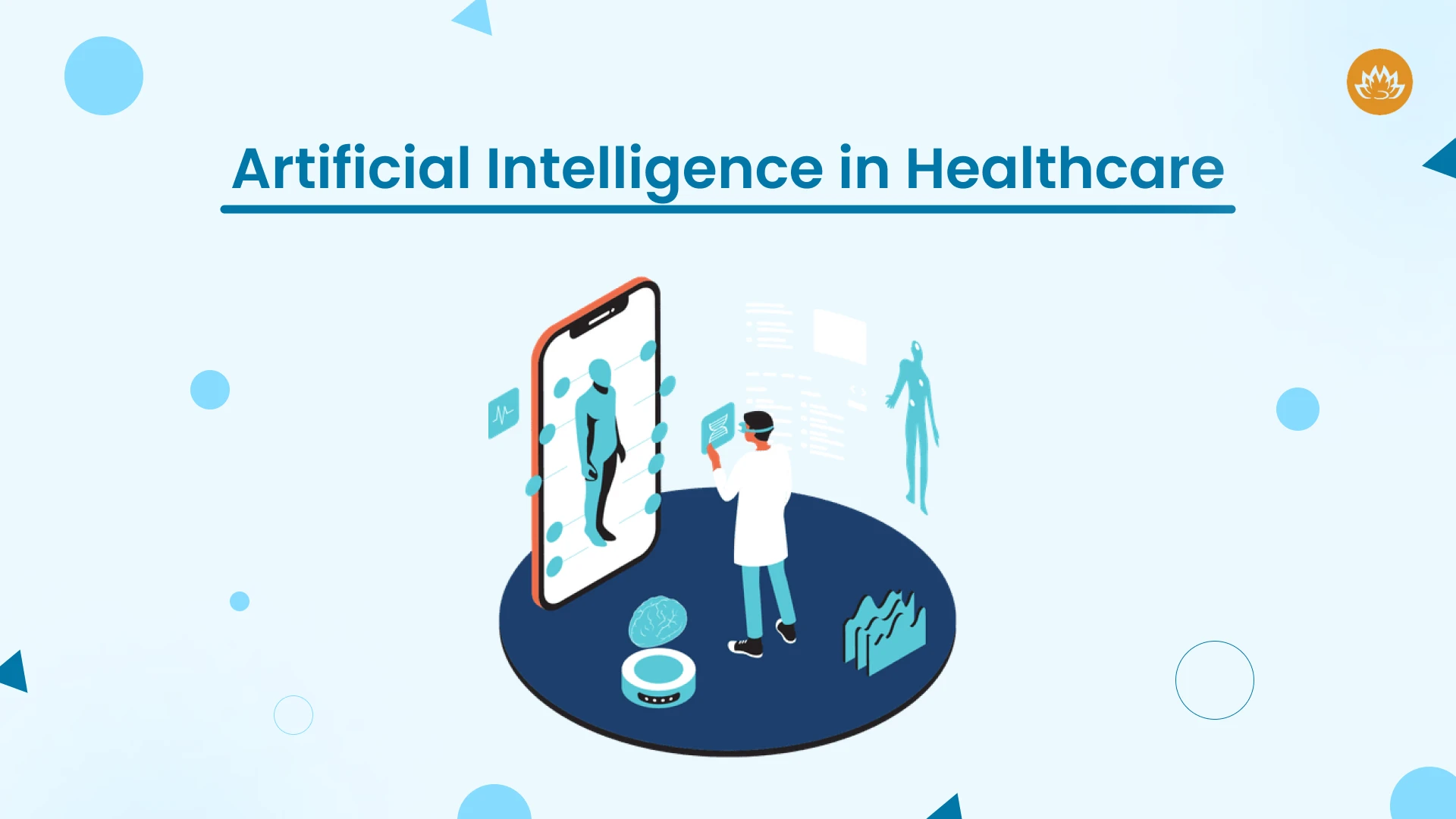In today’s data-driven world, successful businesses rely heavily on data analytics to make informed decisions. By analyzing data, companies can uncover insights into customer behavior, identify market trends, improve operational efficiency, and gain a competitive edge. This blog explores the transformative power of data analytics in decision-making and how businesses can leverage data insights to drive growth.

Why Data Analytics is Essential in Modern Business
Data analytics refers to the process of examining raw data to uncover patterns, correlations, and actionable insights. For businesses, data analytics is no longer optional; it’s a critical component of strategic decision-making. As companies generate massive amounts of data daily, using analytics allows them to harness this information to make more informed choices.
Key reasons data analytics is essential in modern business include:
- Enhanced decision-making with data-driven insights.
- Increased efficiency through process optimization.
- Better understanding of customer needs for improved service.
- Competitive advantage by identifying and acting on trends early.
How Data Analytics Supports Business Decision Making
Data analytics aids in decision-making by offering a clear, objective view of what’s happening within the organization and the market. Here’s how data analytics can drive better decisions across different aspects of business operations:
1. Improved Operational Efficiency
By analyzing internal processes and identifying bottlenecks, data analytics can help improve efficiency. Businesses can use this insight to automate repetitive tasks, optimize workflows, and allocate resources more effectively. For instance, analyzing production data can reveal inefficiencies in the manufacturing process, enabling management to implement changes that reduce waste and cut costs.
Example: A logistics company might use data analytics to monitor delivery routes, identifying patterns that lead to delays. With this insight, they can adjust routes to reduce travel time and fuel costs, enhancing operational efficiency.
2. Enhanced Customer Understanding and Personalization
Understanding customer preferences and behaviors is key to developing products and services that resonate with the target market. Data analytics enables businesses to segment their audience, personalize marketing efforts, and improve customer satisfaction. By tracking customer interactions, companies can create personalized experiences that lead to increased loyalty and higher sales.
Example: An e-commerce company might analyze purchasing data to identify products frequently bought together. With this information, they can implement personalized product recommendations, increasing the likelihood of additional purchases.
3. Data-Driven Marketing Strategies
Marketing is a data-rich function where analytics play a vital role in creating targeted campaigns. Data analytics can measure the performance of marketing campaigns, track conversion rates, and assess customer engagement. By analyzing these metrics, businesses can refine their strategies, focusing on channels and messages that generate the highest ROI.
Example: A retail store may analyze data from social media platforms to identify which ads have the highest engagement rates. This enables them to allocate more resources to successful ads, maximizing the impact of their marketing budget.
4. Financial Planning and Forecasting
Financial data is essential for budgeting, forecasting, and risk management. Data analytics provides financial insights that help businesses make better budgetary decisions, manage cash flow, and predict future expenses or revenue. By evaluating historical data and financial trends, businesses can create more accurate financial plans.
Example: A SaaS company can use analytics to forecast future revenue based on customer acquisition trends, helping them plan for potential expansions or identify when additional funding might be needed.
5. Product Development and Innovation
Data analytics enables businesses to create products that meet the specific needs of their customers. By gathering and analyzing customer feedback, product usage data, and market trends, companies can identify areas for improvement or innovation. This approach reduces the risk associated with product development, ensuring that new offerings align with customer expectations.
Example: A smartphone company might analyze data on the most frequently used features of their previous models, using this information to prioritize features in their next release.
6. Competitive Analysis
In a rapidly changing market, staying ahead of the competition is crucial. Data analytics allows businesses to track competitor behavior, understand market positioning, and analyze industry trends. This knowledge can inform strategic decisions, enabling companies to identify opportunities and avoid potential pitfalls.
Example: An online retail platform might track competitor pricing and product assortment, using this data to adjust their offerings or promotions in response to market demand.
Types of Data Analytics Used in Business
To make the most of data analytics, businesses use various types of analysis tailored to different decision-making needs:
- Descriptive Analytics: Summarizes historical data to reveal what happened. Useful for identifying trends and understanding past performance.
- Diagnostic Analytics: Explores the reasons behind trends and events. This type of analysis answers the “why” of past results.
- Predictive Analytics: Uses historical data to predict future outcomes. Common in demand forecasting and sales projections.
- Prescriptive Analytics: Suggests actionable steps based on insights gained. Often used in recommendation systems and strategic planning.
Each type of analytics serves a unique purpose, providing a comprehensive view that aids informed decision-making.
Steps to Implement Data Analytics in Decision Making
Implementing data analytics effectively requires a structured approach. Here’s a step-by-step guide for businesses:
- Define Clear Objectives: Determine what you aim to achieve, such as improving customer experience, optimizing costs, or forecasting sales.
- Collect Relevant Data: Gather data from relevant sources, including CRM, website analytics, sales records, and customer feedback.
- Choose the Right Tools: Select analytics tools and software that align with your objectives. Examples include Google Analytics, Tableau, and Python for advanced analytics.
- Analyze the Data: Apply appropriate analytical methods (descriptive, predictive, etc.) based on your business needs.
- Interpret and Act on Insights: Use the insights to make informed decisions, implement changes, and track the results for continuous improvement.
Key Benefits of Data Analytics in Business Decision Making
Data analytics provides several important benefits that enhance decision-making:
- Increased Efficiency: Optimizes processes, saving time and resources.
- Reduced Risks: Provides insights that help avoid potential risks or identify warning signs early.
- Better Customer Insights: Improves understanding of customer behavior and preferences.
- Enhanced Agility: Enables rapid response to changes in market or customer demand.
- Informed Innovation: Guides the development of products and services that meet market needs.
Challenges in Data Analytics and How to Overcome Them
While data analytics offers numerous benefits, businesses may encounter challenges:
- Data Quality Issues: Incomplete or inaccurate data can lead to incorrect conclusions. Ensure data is regularly cleaned and verified for accuracy.
- Data Privacy and Compliance: Protecting customer data and complying with regulations like GDPR is essential. Invest in data security measures to maintain trust and compliance.
- Skill Gaps: Data analytics requires specialized skills. Provide training or hire skilled data analysts to ensure effective implementation.
Addressing these challenges will improve the effectiveness and reliability of your analytics program.
Conclusion: Harness the Power of Data Analytics for Strategic Success
Data analytics is a powerful tool that enables businesses to make smarter, more informed decisions. By analyzing data, companies gain valuable insights that can enhance efficiency, improve customer satisfaction, and provide a competitive edge. With a structured approach to data collection, analysis, and implementation, businesses can leverage data analytics to drive growth and adapt to changing market demands.
Embracing data analytics is not just about adopting new technology; it’s about creating a culture of informed, data-driven decision-making that empowers your business to succeed in a competitive landscape. By doing so, you position your company for long-term success, equipped to make decisions that align with strategic goals and customer needs.





Leave a Reply